Timber Production Cost and Profit Functions for Community Forests
- September 9, 2024
- 0 comment
Community forests, overseen by local communities, embody a governance model that harmonizes ecological conservation with the economic interests of the people who depend on these forests. Traditionally, these forests have been vital in supplying communities with crucial resources such as timber, fuelwood, and a variety of non-timber products.

As global awareness around sustainable forest management has grown, the significance of community forests has also increased. By managing these forests effectively, communities can ensure the responsible and sustainable use of resources, which not only supports environmental preservation but also sustains and enhances local livelihoods.
Table of Contents:
- Timber Production in Community Forests
- Cost Functions in Timber Production
- Factors Affecting Costs in Timber Production
- Profit Functions in Timber Production
- Economies of Scale in Community Forests
- Market Dynamics and Timber Prices
- Sustainable Forest Management and its Economic Impact
- Policy and Regulatory Framework
- Challenges and Opportunities in Community Forests
Overview of Timber Production in Community Contexts
Timber production in community forests differs significantly from commercial or industrial forestry operations. It often involves smaller-scale operations with a strong focus on sustainable practices. The production process includes tree planting, maintenance, harvesting, and processing, with the added complexity of ensuring that these activities do not harm the ecosystem or reduce the forest’s capacity to provide other ecosystem services, such as carbon sequestration, water regulation, and biodiversity conservation.
Community forests are areas of forest land managed collectively by local communities, often with the aim of balancing economic benefits with environmental conservation. These forests can be small or large and are managed through various models that reflect the cultural, social, and economic priorities of the community involved. Timber production in these forests is often geared towards meeting both local needs and generating income for community development projects.
Timber Production in Community Forests
Timber production is a significant activity within community forests. The types of timber products derived from these forests include hardwoods, softwoods, and pulpwood, each serving different market demands. The scale of operations in community forests can vary widely, from small-scale selective logging to more extensive operations. However, timber production in these settings often prioritizes sustainability, with practices such as reduced-impact logging and selective harvesting to maintain forest health and productivity.
Cost Functions in Timber Production
Understanding the cost structure of timber production is crucial for managing community forests efficiently. Cost functions in timber production include both variable and fixed costs. Variable costs fluctuate with the level of production and include expenses such as labor, machinery, and maintenance. For instance, the cost of harvesting timber depends on the number of trees felled, the distance to processing facilities, and the type of machinery used.

Fixed costs, on the other hand, are incurred regardless of the level of production. These include land acquisition or leasing costs, management expenses, and administrative overheads. In community forests, fixed costs might also encompass community engagement activities, monitoring, and compliance with forest management plans.
| Cost Category | Description | Example Costs (per hectare) |
|---|---|---|
| Fixed Costs | One-time or long-term investments | |
| Land Acquisition | Purchase or lease of land | $500 |
| Equipment | Machinery (e.g., chainsaws, tractors) | $1,200 |
| Infrastructure | Roads, storage facilities | $800 |
| Variable Costs | Costs that vary with production level | |
| Labor | Wages for logging and transport | $300 |
| Transportation | Fuel and vehicle maintenance | $150 |
| Maintenance | Equipment repairs and upkeep | $100 |
| Overhead Costs | Ongoing operational expenses | |
| Administrative | Management, legal fees | $200 |
| Community Engagement | Costs for community meetings, training | $100 |
| Taxes & Insurance | Property taxes, insurance premiums | $150 |
Total Estimated Cost per Hectare: $3,500
Factors Affecting Costs in Timber Production
Several factors influence the costs associated with timber production in community forests. Site-specific factors such as soil fertility, climate, and topography can significantly impact both the ease of timber extraction and the cost of operations. For example, steep terrains may require specialized machinery and skilled labor, increasing costs.
| Factor | Description | Impact on Cost | Example Cost Variation (per hectare) |
|---|---|---|---|
| Environmental Factors | Natural conditions affecting productivity | ||
| Climate | Rainfall, temperature, etc. | High in extreme climates | +$200 in drought-prone areas |
| Soil Quality | Nutrient levels, soil type | Better soil reduces costs | -$100 in fertile soil areas |
| Economic Factors | Market and economic conditions | ||
| Market Demand | Timber prices influenced by demand | High demand lowers per unit cost | -$150 in high-demand regions |
| Labor Costs | Wages affected by local economy | Higher in areas with high wages | +$100 in urbanized regions |
| Social Factors | Community and policy influences | ||
| Community Involvement | Level of participation by locals | High involvement may lower costs | -$50 with volunteer labor |
| Government Policies | Regulations, taxes, subsidies | Higher costs with strict regulations | +$200 due to compliance costs |
Total Cost Variation per Hectare: Ranging from -$300 to +$450
Forest management practices also play a critical role in determining costs. Sustainable practices, such as maintaining buffer zones and preserving water quality, might increase costs in the short term but can lead to long-term benefits, including higher productivity and resilience against pests and diseases. Additionally, economies of scale can affect cost efficiency; larger operations may achieve lower per-unit costs due to the spread of fixed costs over a larger production base.
Profit Functions in Timber Production
Profit functions in timber production are a function of revenue generated from timber sales minus the costs incurred. Revenue streams in community forests often include both timber and non-timber products. Timber revenue depends on the volume of wood harvested, market prices, and the quality of the timber. Higher-quality timber often fetches premium prices in the market, enhancing profitability.
| Profit Component | Description | Example Values (per hectare) |
|---|---|---|
| Revenue | Income from timber sales | |
| Timber Sales | Income from selling harvested timber | $5,000 |
| Value-Added Processing | Income from processing timber (e.g., milling) | $1,000 |
| Costs | Expenses deducted from revenue | |
| Total Production Costs | Combined fixed, variable, and overhead costs | -$3,500 |
| Profit Calculation | Revenue minus Costs | |
| Gross Profit | Revenue minus Total Production Costs | $2,500 |
| Additional Considerations | Factors affecting final profit | |
| Market Fluctuations | Changes in timber prices | ±$500 |
| Sustainable Practices | Long-term profitability from sustainable methods | ±$200 |
Total Estimated Profit per Hectare: $2,500 (with potential variation)
Several factors influence the profitability of timber production. Market prices, driven by demand and supply dynamics, are a primary determinant. In community forests, profitability can also be affected by the capacity to process and add value to timber before sale. For instance, communities that can mill their timber into planks or produce finished wood products may capture higher revenues compared to those that sell raw logs.
Economies of Scale in Community Forests
Economies of scale refer to the cost advantages that enterprises obtain due to the scale of operation, with cost per unit of output generally decreasing with increasing scale. In community forests, larger operations may benefit from lower costs per unit of timber produced due to efficiencies in labor, machinery use, and transportation. However, achieving economies of scale can be challenging for smaller community forests, which may lack the capital, infrastructure, or market access to expand their operations.

Case studies have shown that community forests that collaborate to pool resources or form cooperatives can overcome some of these challenges, achieving economies of scale and improving profitability. These collaborations can reduce costs and enhance market access, allowing communities to negotiate better prices for their timber products.
Market Dynamics and Timber Prices
Timber prices are influenced by a complex interplay of global and local market dynamics. Global demand for timber, influenced by the construction industry, paper production, and furniture manufacturing, affects local prices. Price volatility is a significant concern for community forests, as fluctuations can impact profitability and long-term planning.

Access to markets is another critical factor for community forests. Proximity to markets or processing facilities can reduce transportation costs, making timber production more profitable. However, remote community forests often face higher transportation costs, reducing their competitiveness in the market.
Sustainable Forest Management and its Economic Impact
Sustainable forest management (SFM) is a cornerstone of community forest operations, balancing economic, environmental, and social objectives. While sustainable practices may involve higher upfront costs, they ensure the long-term availability of forest resources and enhance the resilience of forest ecosystems. This, in turn, supports the continuous generation of revenue from timber and other forest products.

Certification and eco-labeling, such as Forest Stewardship Council (FSC) certification, can also impact the economics of timber production. While obtaining certification involves costs, it can open access to premium markets that value sustainably produced timber, potentially increasing profitability.
Policy and Regulatory Framework
Community forests operate within a framework of national and international policies that govern forest use and management. Policies that support community rights to manage and benefit from forests are crucial for the success of community forestry initiatives. However, compliance with legal and regulatory requirements can add to the costs of timber production.
- Local and National Policies: These can include land use regulations, tax policies, and subsidies for sustainable practices. In some cases, supportive policies can reduce costs and increase profitability, while restrictive policies can have the opposite effect.
- International Guidelines: Guidelines and certifications, such as those from the Forest Stewardship Council (FSC), can help community forests access premium markets and achieve higher profitability. However, the costs of certification can be a barrier for some communities.
For example, regulations may mandate specific management practices, monitoring, and reporting, which can increase operational costs. Conversely, supportive policies, such as subsidies for sustainable practices or tax incentives, can enhance the economic viability of community forests.
Challenges and Opportunities in Community Forests
Community forests face several challenges in timber production, including market access, financing, and competition from industrial forestry operations. However, these challenges are accompanied by opportunities for innovation and diversification.

Eco-tourism, carbon credits, and biodiversity conservation are emerging opportunities that can complement timber revenue and enhance the economic resilience of community forests. Engaging communities in capacity-building initiatives and fostering partnerships with non-governmental organizations (NGOs) and private enterprises can also create new avenues for income generation.
Case Studies of Successful Community Forests
Examining successful community forests provides valuable insights into best practices in cost management and profit maximization. Case studies from regions such as Latin America, Africa, and Southeast Asia highlight the importance of community involvement, sustainable management practices, and strategic market engagement in achieving profitability.
- Case Study 1: In [Region/Country], a community forest successfully implemented a sustainable forestry model, focusing on selective logging and reforestation. As a result, the community was able to achieve consistent timber yields and stable profits over a decade.
- Case Study 2: In [Region/Country], another community faced challenges due to poor management practices and lack of market access. Despite having significant timber resources, the community struggled to generate profits and eventually faced financial difficulties.
These examples demonstrate that with the right support and strategies, community forests can be both economically viable and environmentally sustainable. Lessons learned from these models can inform policy and practice in other regions.
Community Involvement and Profit Sharing Models
Community involvement is a fundamental aspect of community forestry, and various profit-sharing models exist to ensure that the benefits of timber production are equitably distributed.
- Models of Community Engagement: These can range from fully community-managed forests to joint management models where communities work with government or private entities. The level of community involvement can affect both costs and profits.
- Profit Sharing Mechanisms: Profit-sharing models can include direct payments to community members, investments in local infrastructure, or the creation of community funds for future projects. Effective profit-sharing mechanisms can enhance community support and participation, leading to more successful forestry operations.
- Social and Economic Benefits: Beyond financial profits, community forestry can provide significant social and economic benefits, including job creation, skill development, and the preservation of cultural practices.
Future Trends in Timber Production for Community Forests
The future of timber production in community forests is likely to be shaped by several emerging trends:
- Emerging Market Trends: As global demand for sustainably sourced timber increases, community forests may find new opportunities for profitability. However, they will also need to navigate potential challenges, such as market fluctuations and competition from large-scale forestry operations.
- Potential for Carbon Credits: Community forests may also benefit from emerging markets for carbon credits, which provide financial incentives for maintaining forest cover and reducing carbon emissions. This could become an important additional revenue stream for community forests.
- Role of Community Forests in Global Timber Markets: As community forests become more integrated into global timber markets, they will need to adopt more sophisticated management practices and technologies to remain competitive. This could lead to increased profitability, but also requires careful planning and investment.
Final Concluding Thoughts
Timber production in community forests presents both significant opportunities and challenges. By understanding the cost and profit functions involved, communities can better manage their resources and achieve sustainable profitability. The key to success lies in balancing economic, environmental, and social factors, adopting sustainable practices, and staying informed about market trends and technological advancements. As community forests continue to play a vital role in global timber production, their ability to manage costs and maximize profits will be crucial to their long-term success.
Frequently Asked Questions (FAQs)
- What are the main cost factors in timber production?
The main cost factors include fixed costs (land, equipment), variable costs (labor, transportation), and overhead costs (administration, community management). - How can communities maximize profits from timber production?
Communities can maximize profits by optimizing production efficiency, timing sales with favorable market conditions, and adopting sustainable practices that ensure long-term profitability. - What role does sustainability play in timber production profitability?
Sustainability is crucial for long-term profitability, as it ensures a steady supply of timber and can open up additional revenue streams, such as eco-certifications or carbon credits. - How do local policies impact community forests’ profitability?
Local policies can either support or hinder profitability by influencing costs (through taxes or subsidies) and market access (through regulations or incentives). - What are the common challenges in cost and profit estimation in community forests?
Common challenges include data availability, variability in local management practices, and regulatory hurdles that complicate accurate cost and profit estimation. - How does technology influence timber production costs?
Technology can reduce costs by improving efficiency in operations, monitoring forest health, and optimizing harvest planning, leading to higher profitability.
We hope this guide has provided valuable insights into the complex dynamics of timber production costs and profit functions within community forests. Have experience managing a community forest or ideas on how to optimize these economic factors? Share your thoughts and join the conversation below. Your input can help others better understand the financial and environmental aspects of community forestry and contribute to sustainable practices. Don’t forget to share this guide with those dedicated to balancing profitability with conservation, ensuring that our forests continue to thrive for future generations.

James Wilson
Forestry AuthorJames Wilson has over 15 years of experience in forestry economics, specializing in sustainable practices, investment opportunities, and financial management. He has contributed to notable publications like "Forestry Today" and "EcoFinance Journal" and is known for providing practical and insightful advice. With a degree in Environmental Economics, James stays updated through continuous learning and active participation in industry discussions. Outside work, he enjoys hiking and nature photography, bringing a well-rounded perspective to his professional role.


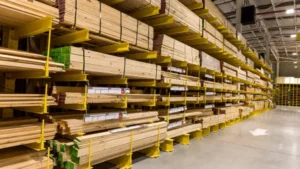
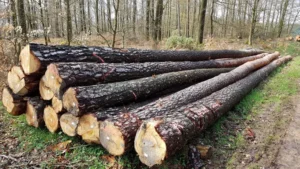

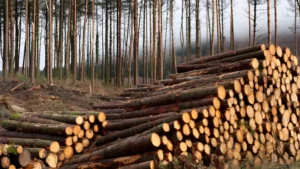
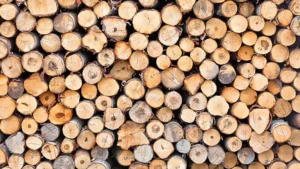
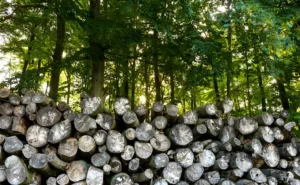
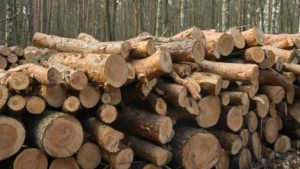
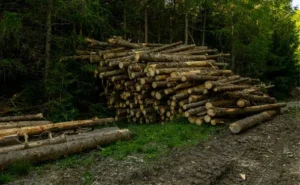
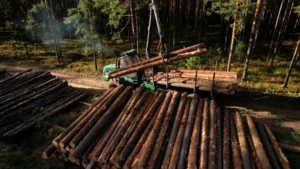

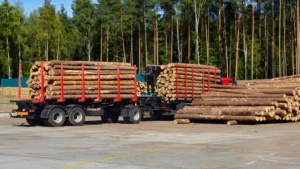
Leave your comment